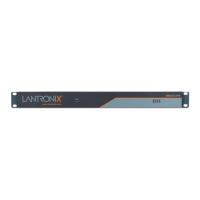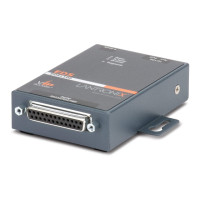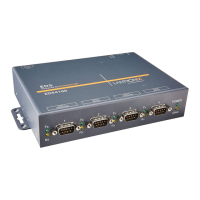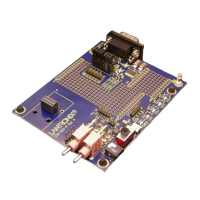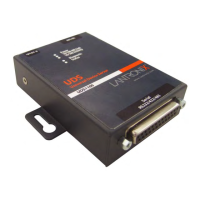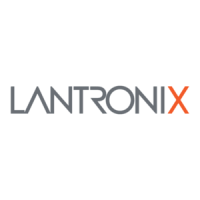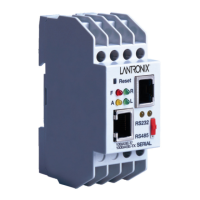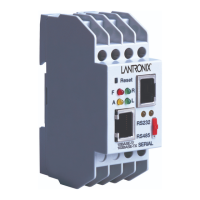10: Maintenance and Diagnostics Settings
EDS Device Servers User Guide 110
Protocol Stack Page
Protocol Stack Page
Settings
Description
TCP
Send RSTs RST is a TCP control bit that informs the receiving TCP stack to
end a connection immediately. However, sending this bit may
pose a security risk. Select whether you want the RST control bit
sent to end a connection immediately. Choices are:
On = the RST bit is sent. (default)
Off = the RST bit is not sent.
After selecting an option, click Submit.
ICMP
Internet Control Message Protocol (ICMP) can be used as an
error-reporting protocol between two hosts. This setting specifies
whether incoming and outgoing ICMP messages are processed.
Choices are:
On = ICMP messages are processed. (default)
Off = ICMP messages are not processed.
After selecting an option, click Submit.
ARP
Enter the maximum number of seconds that a MAC address will
remain in cache before being removed. Default is 60 seconds.
After selecting an option, click Submit.
ARP Cache
IP Address Enter the IP address of the entry to be added to the Address
Resolution Protocol (ARP) cache.
MAC Address Enter the MAC address of the entry to be added to the ARP
cache. After entering an IP address and a MAC address, click
Submit.
IP Address Filter Page
Clicking the IP Address Filter link in the menu bar displays the IP Address Filter page.
Here you can specify the IP addresses and subnets allowed to send data to the EDS. All
packets sent from IP addresses not on this list are ignored and discarded. By default, the
IP address list is empty, so all addresses are allowed.
The network mask and IP address settings you specify on this page determine the range
of IP addresses that can access the EDS. For example:
An IP address of 10.0.0.0 and a network mask of 255.0.0.0 allows any device
with an IP address in the 10.x.x.x range to access the EDS.
An IP address of 192.168.1.1 with a network mask of 255.0.0.0 causes the EDS
to allow all IP addresses in the range of 192.x.x.x.
An IP address of 192.168.1.1 with a network mask of 255.255.255.0 only allows
IP addresses in the range of 192.168.1.x to access the EDS.
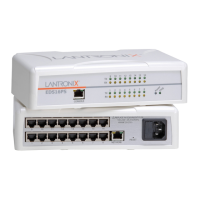
